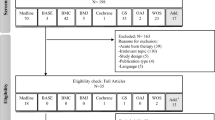Abstract
The aim of this prospective randomized controlled study was to compare the rate of wound healing of 1–5% second degree burns treated with wheat grass extract versus silver sulfadiazine cream in consecutive patients aged 1–60 years with scald, flame, contact, friction, or electric flash burns attending the Burns Out Patient Clinic and Casualty Department of Choithram Hospital and Research Centre, Indore, India, from November 2012 to November 2014. Sixty patients were randomized to receive either wheat grass extract or silver sulfadiazine. The primary outcome was completeness of wound healing at 2 weeks and secondary outcomes pain relief within 24 h, compliance of patient with allocated treatment, and incidence of wound infection. After the allocated treatment had been applied, the burns were dressed in the silver sulfadiazine group but kept open in the wheat grass group. Burn healing was assessed on alternate days until complete epithelization had been achieved. In the wheat grass extract group, complete healing had occurred in 3/30 study subjects by day 4, 1/30 by day 5, 3/30 by day 6, 10/30 by day 8, 8/30 by day 10, 1/30 by day 15, 1/30 by day 19, 2/30 by day 17, and one patient underwent SSG on day 4. In contrast, in the SSD group, 9/30 study subjects (30%) had achieved complete healing by day 12, 4/30 by day 13, 5/30 by day 14, 9/30 by day 15, and 1/30 by day 16. Thus, wound healing was achieved significantly faster (P = 0.0001), pain scores were significantly lower at the end of the first 24 h (P = 0.0001), and there was better compliance (P = 0.0001) in the wheat grass than in the silver sulfadiazine group. The wheat grass extract used in this study is cost-effective and achieves faster wound healing and pain relief than silver sulfadiazine in subjects with 1–5% burns. Further research on this promising approach to burns management is warranted.

Similar content being viewed by others
References
Singh N, Verma P, Pandey BR Therapeutic potential of organic Triticum aestivum Linn. (wheat grass) in prevention and treatment of chronic diseases: an overview. Available at: http://www.ijpsdr.com/pdf/vol4-issue1/2.pdf
Lam CR, Brush BE (1950) Chlorophyll and wound healing; experimental and clinical study. Am J Surg 80(2):204–210
Reynolds CL, Reynolds SJ, Vardharajan L (2014) A novel topical application influences closure of plantar ulcers in leprosy patients: case studies in India. J Sci Healing Outcomes 6(22):11–17
Kohler E, Hart (1936) Growth stimulating properties of grass juice. Science 83:445
Colio L, Babb V (1948) Study of a new stimulatory growth factor. J Biol Chem 174:405–409
Fiore L, Scapagnini U, Riccio R, Canonico PL (1993) Differential activities of Triticum vulgare extract and its fractions in mouse fibroblasts. Acta Therapeutica 19(2):151–162
Martini P, Mazzatenta C, Saponati G (2011) Efficacy and tolerability of fitostimoline in two different forms (soaked gauzes and cream) and citrizan gel in the topical treatment of second-degree superficial cutaneous burns. Dermatol Res Pract: 978291. doi:https://doi.org/10.1155/2011/978291
Singh O, Gupta SS, Soni M (2011) Collagen dressing versus conventional dressings in burn and chronic wounds: a retrospective study. J Cutan Aesthet Surg 4(1):12–16
Davis SC, Mertz PM, Eaglstein WH (1990) Second-degree burn healing: the effect of occlusive dressings and a cream. J Surg Res 48(3):245–248
Shakirov BM (2014) Treatment of sandal burns of the feet in children in a moist environment. Burns 40(3):520–524
Khorasani G (2009) Aloe versus silver sulfadiazine creams for second-degree burns: a randomized controlled study. Surg Today 39(7):587–591
Gerding RL, Emerman CL, Effron D, Lukens T, Imbembo AL, Fratianne RB (1990) Outpatient management of partial-thickness burns: biobrane versus 1% silver sulfadiazine. Ann Emerg Med 19(2):121–124
Tayade MB, Bakhshi GD, Haobijam N. A comparative study of collagen sheet cover versus 1% silver sulfadiazine in partial thickness burns. Available at: http://www.bhj.org.in/journal/2006_4802_april/html/org_res_263-267.html. Accessed 23 Oct 2014
Acknowledgments
The WG preparation was kindly supplied by Wheatgrass Pty Ltd., Australia.
Author information
Authors and Affiliations
Contributions
All authors made substantial contributions to (1) the conception and design of the study, or acquisition of data, or analysis and interpretation of data; (2) drafting the article or revising it critically for important intellectual content; and (3) final approval of the version to be submitted.
Corresponding author
Ethics declarations
Conflict of Interest
The authors declare that they have no conflict of interest.
Rights and permissions
About this article
Cite this article
Chacko, A., Chamania, S. & Bansal, V. Efficacy of Wheat Grass Extract Versus Silver Sulfadiazine in 1–5% Second Degree Burns: a Randomized Controlled Trial. Indian J Surg 81, 211–215 (2019). https://doi.org/10.1007/s12262-018-1763-y
Received:
Accepted:
Published:
Issue Date:
DOI: https://doi.org/10.1007/s12262-018-1763-y




